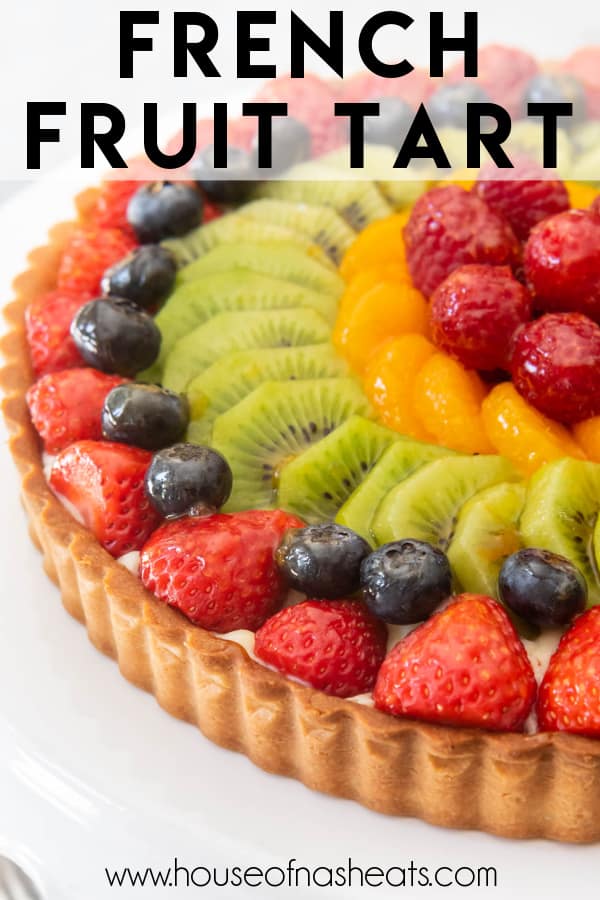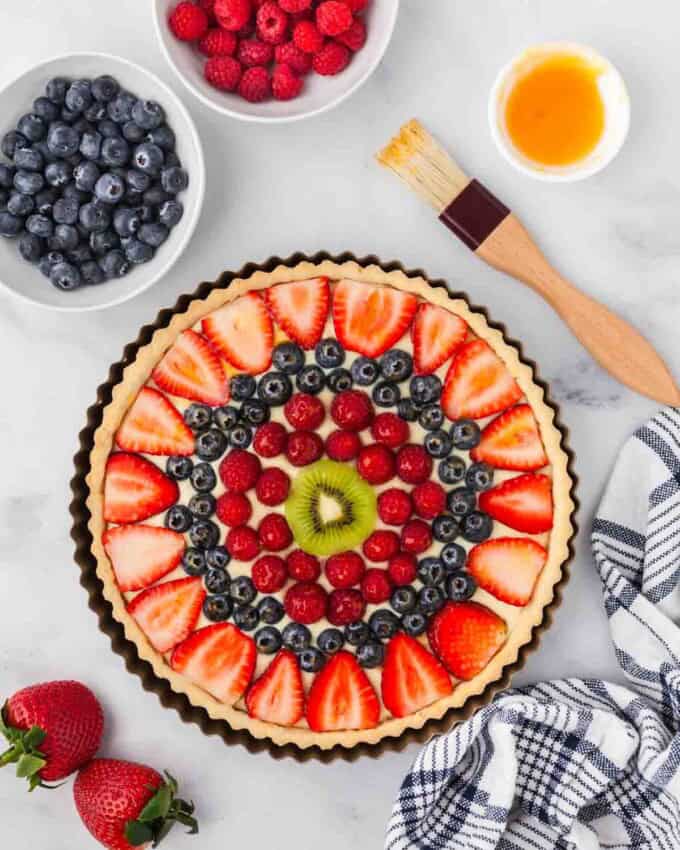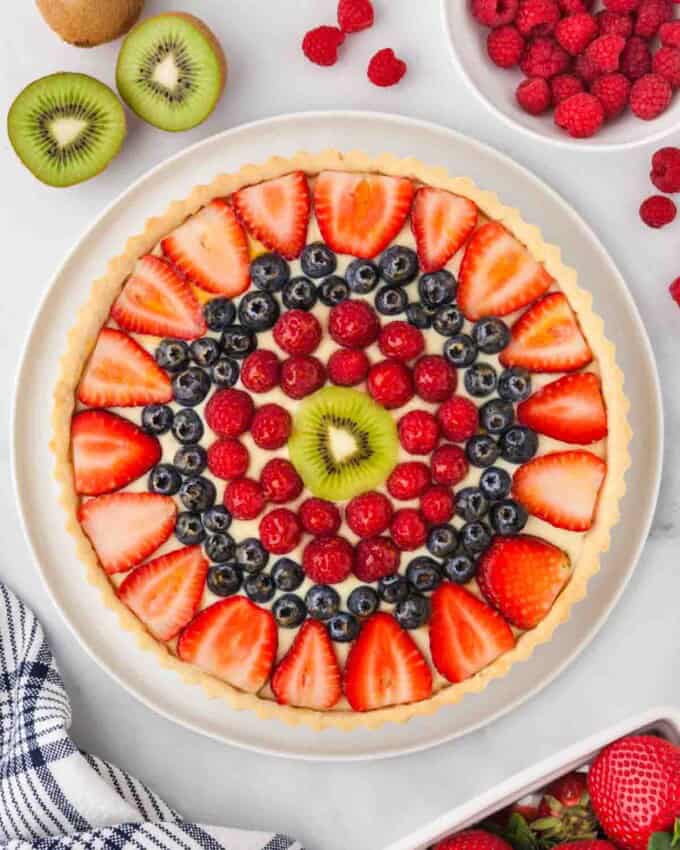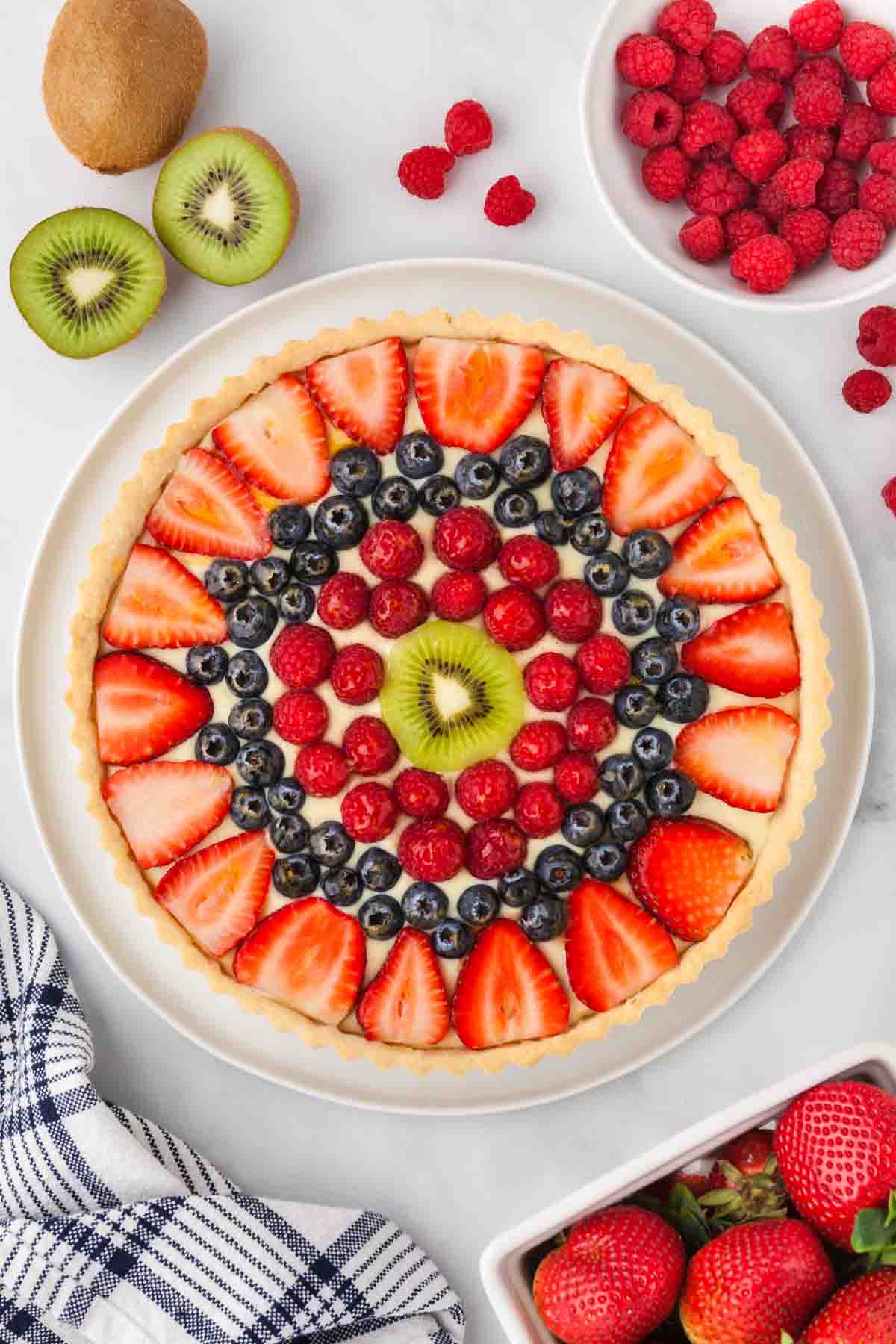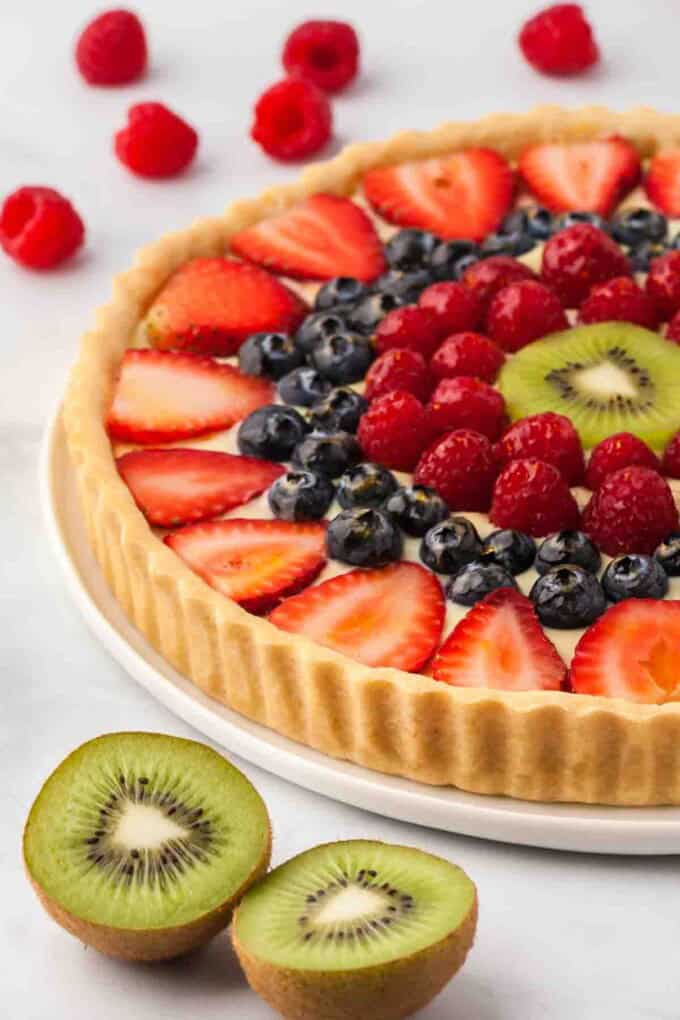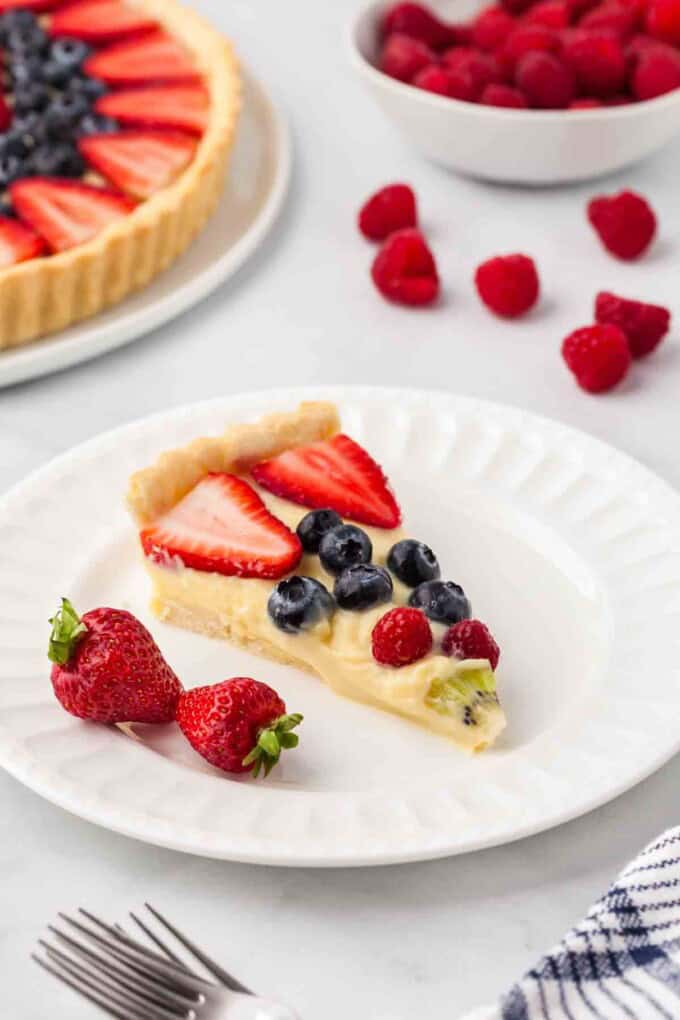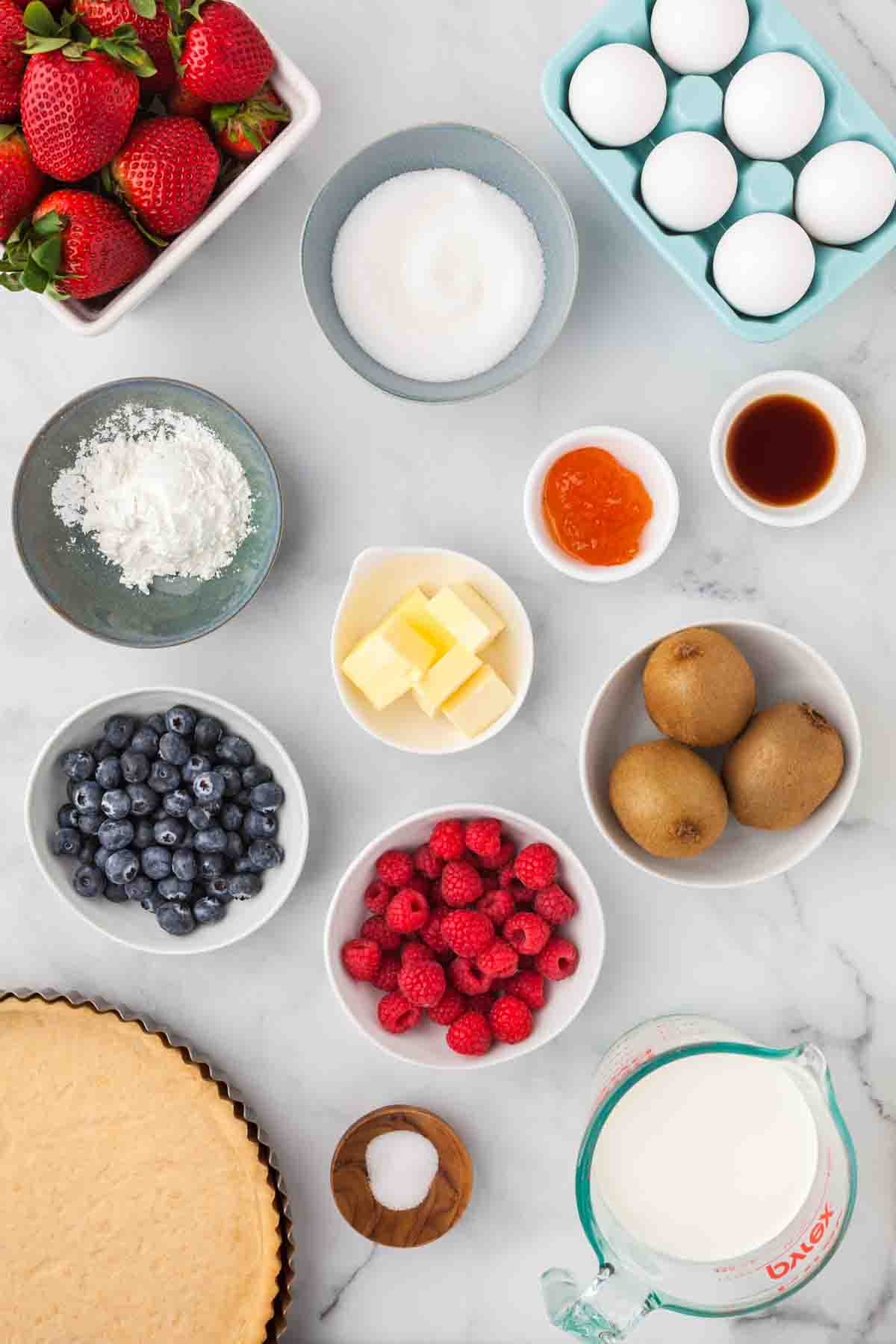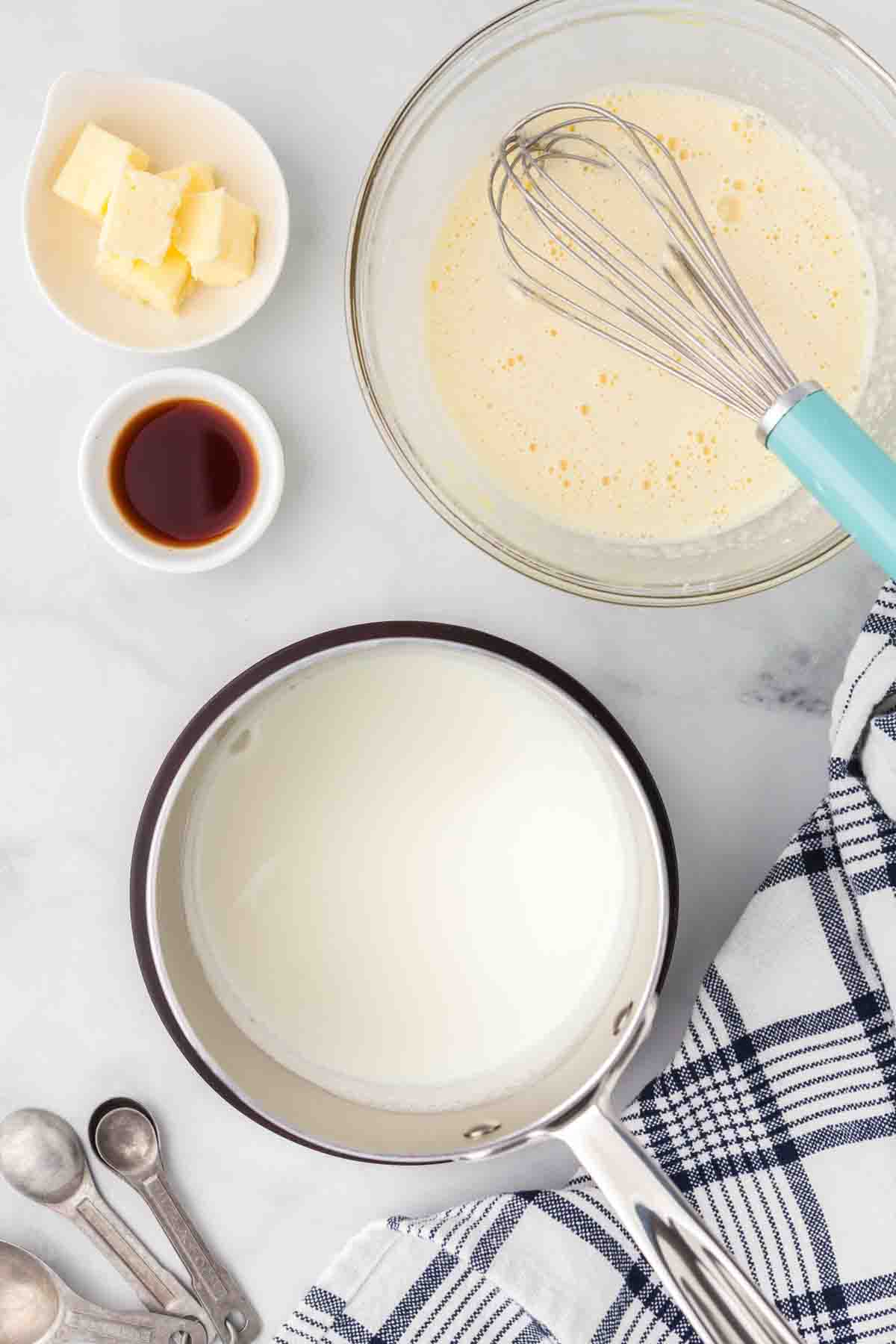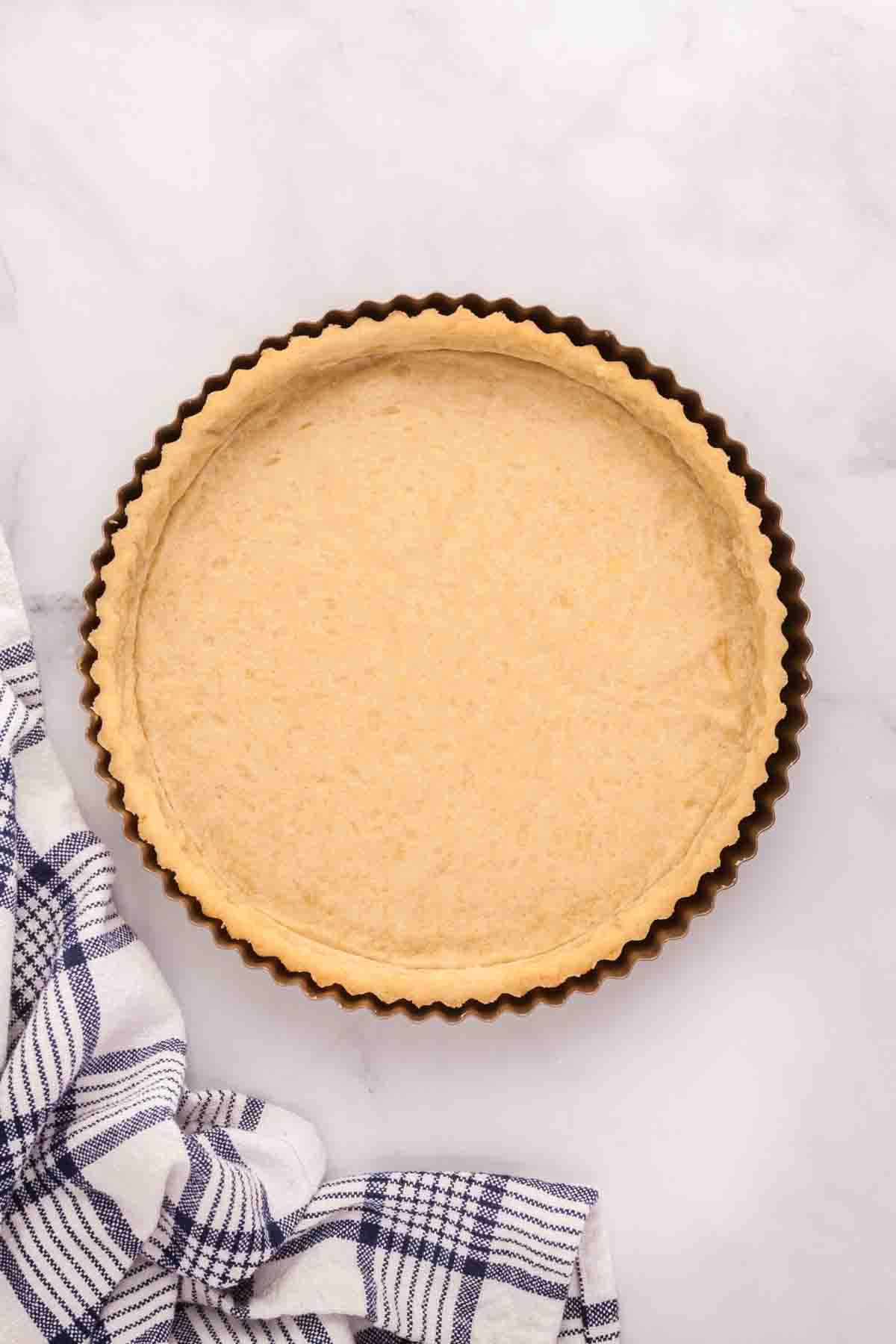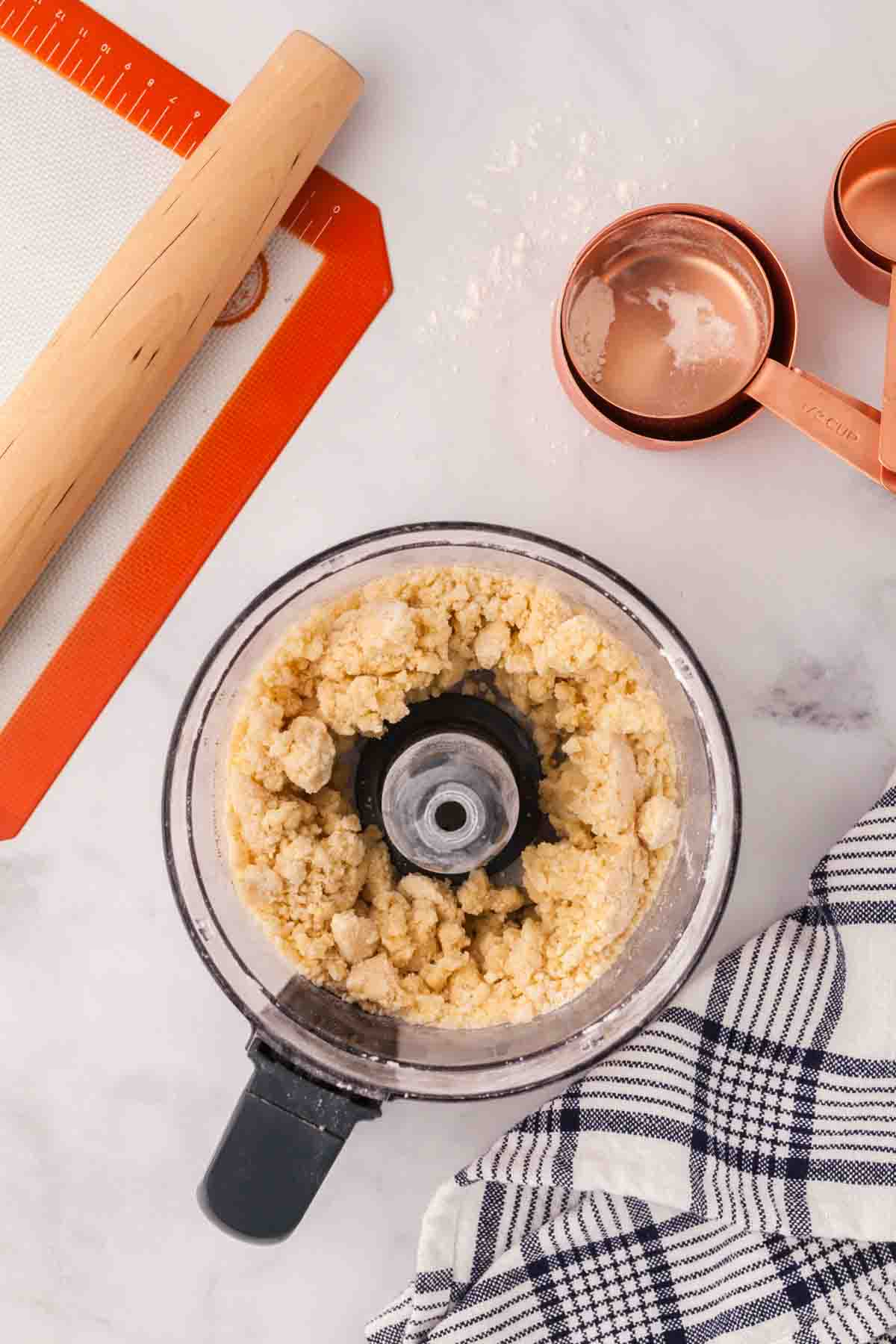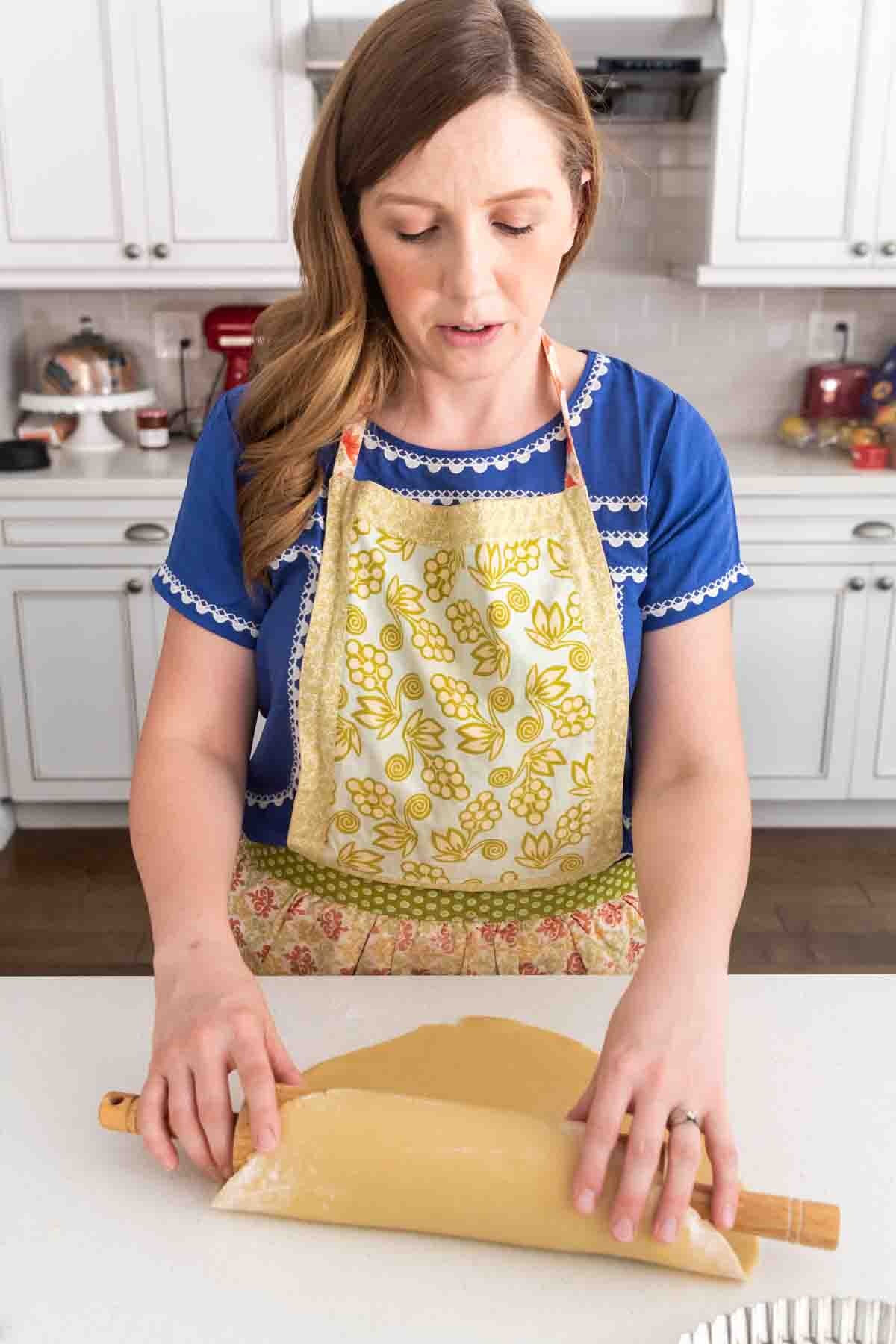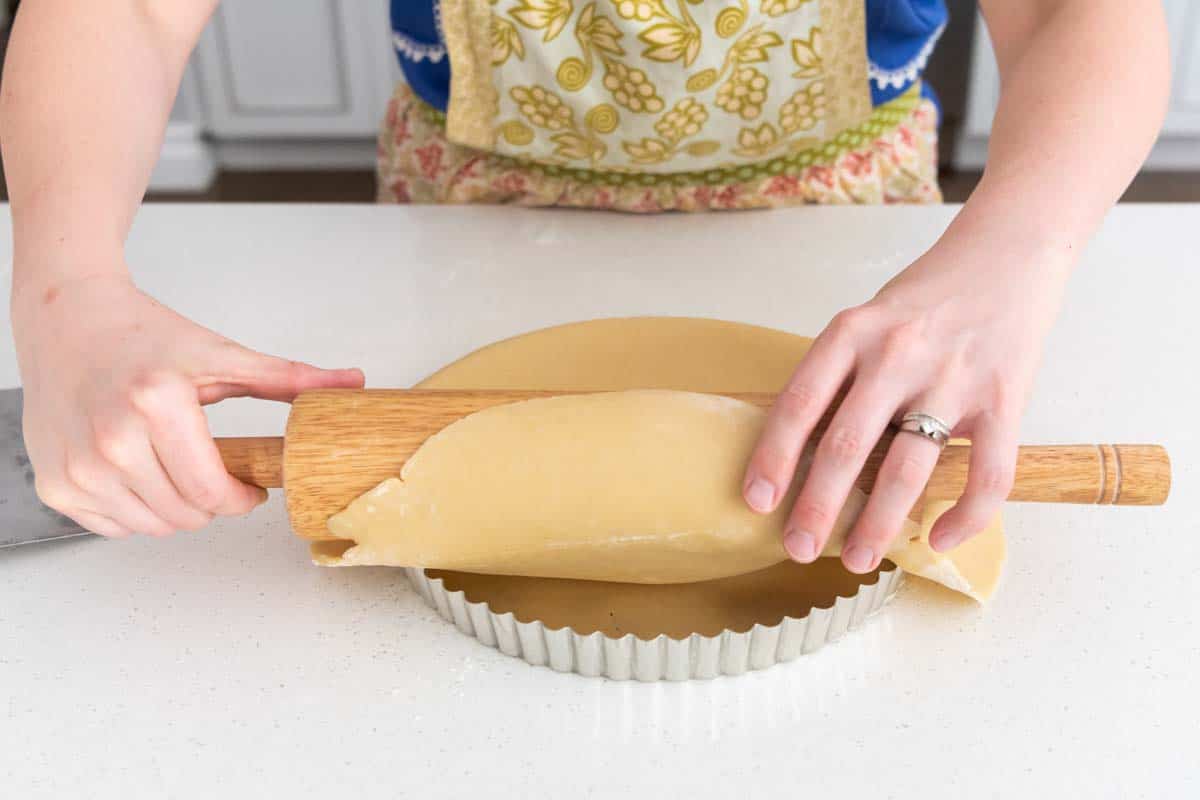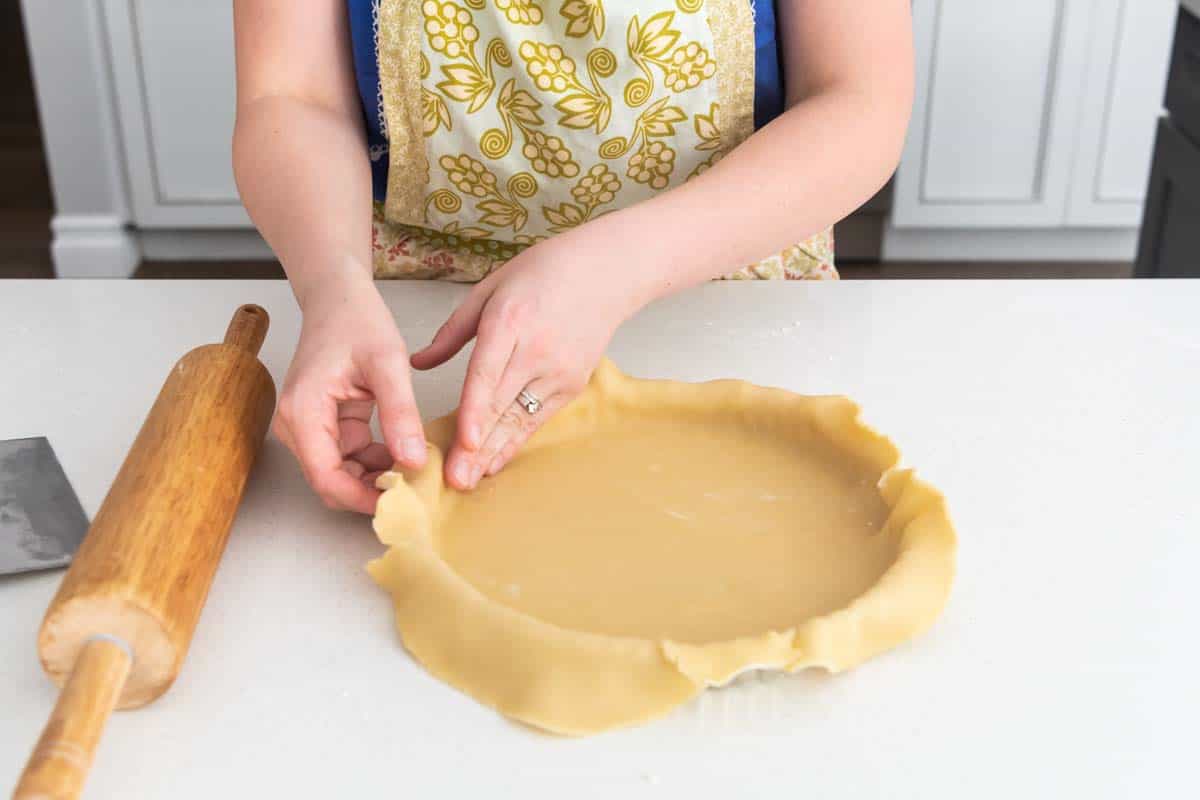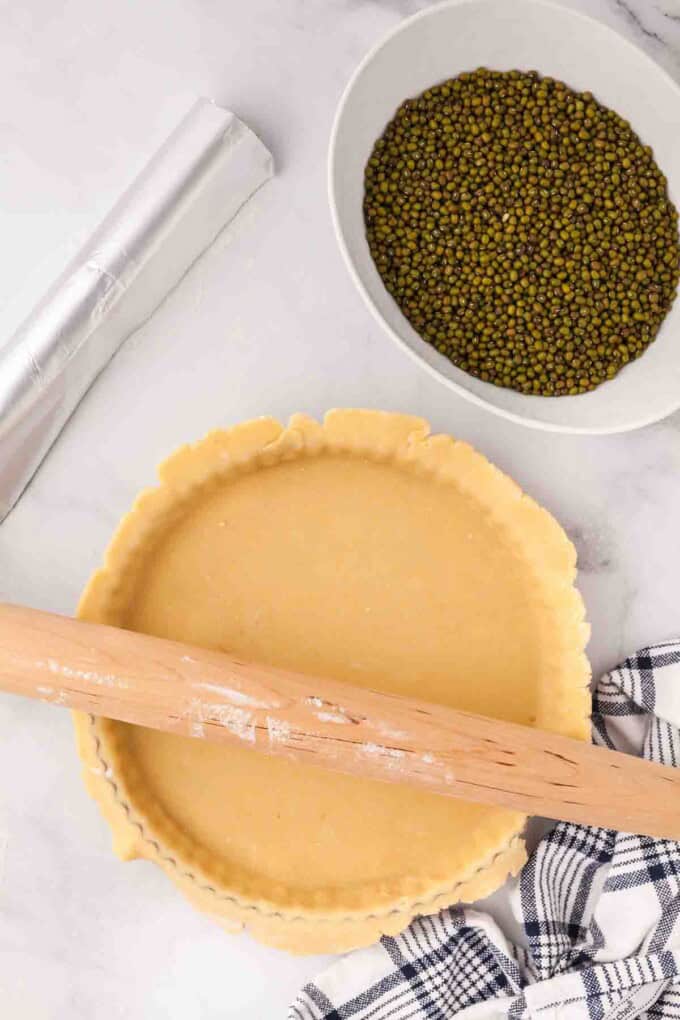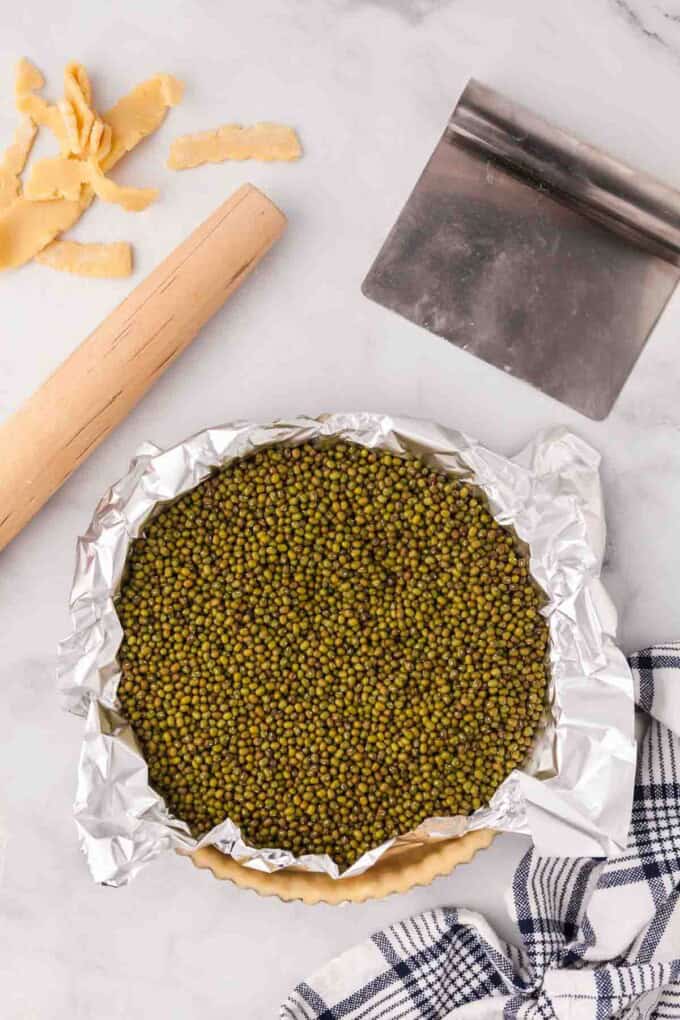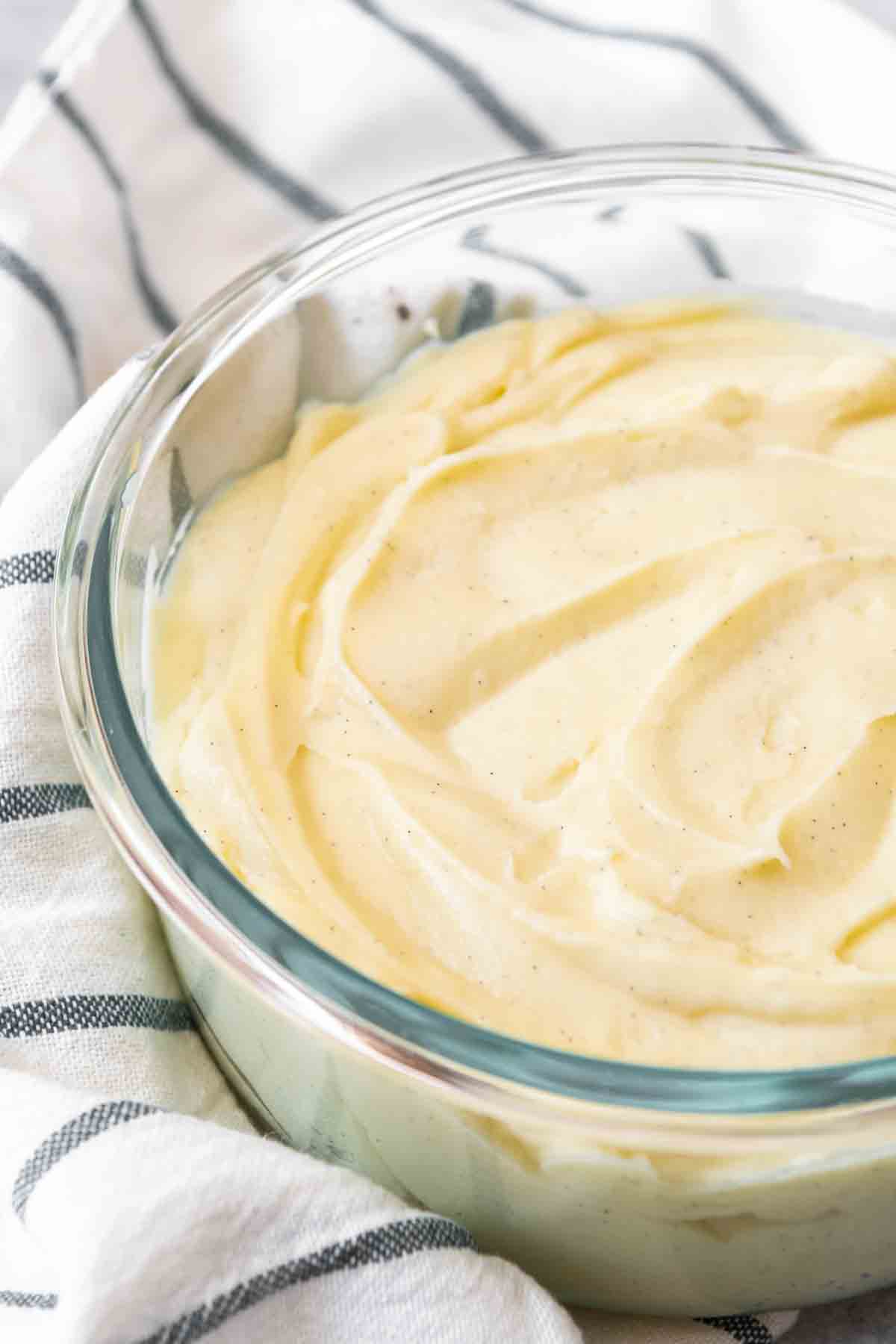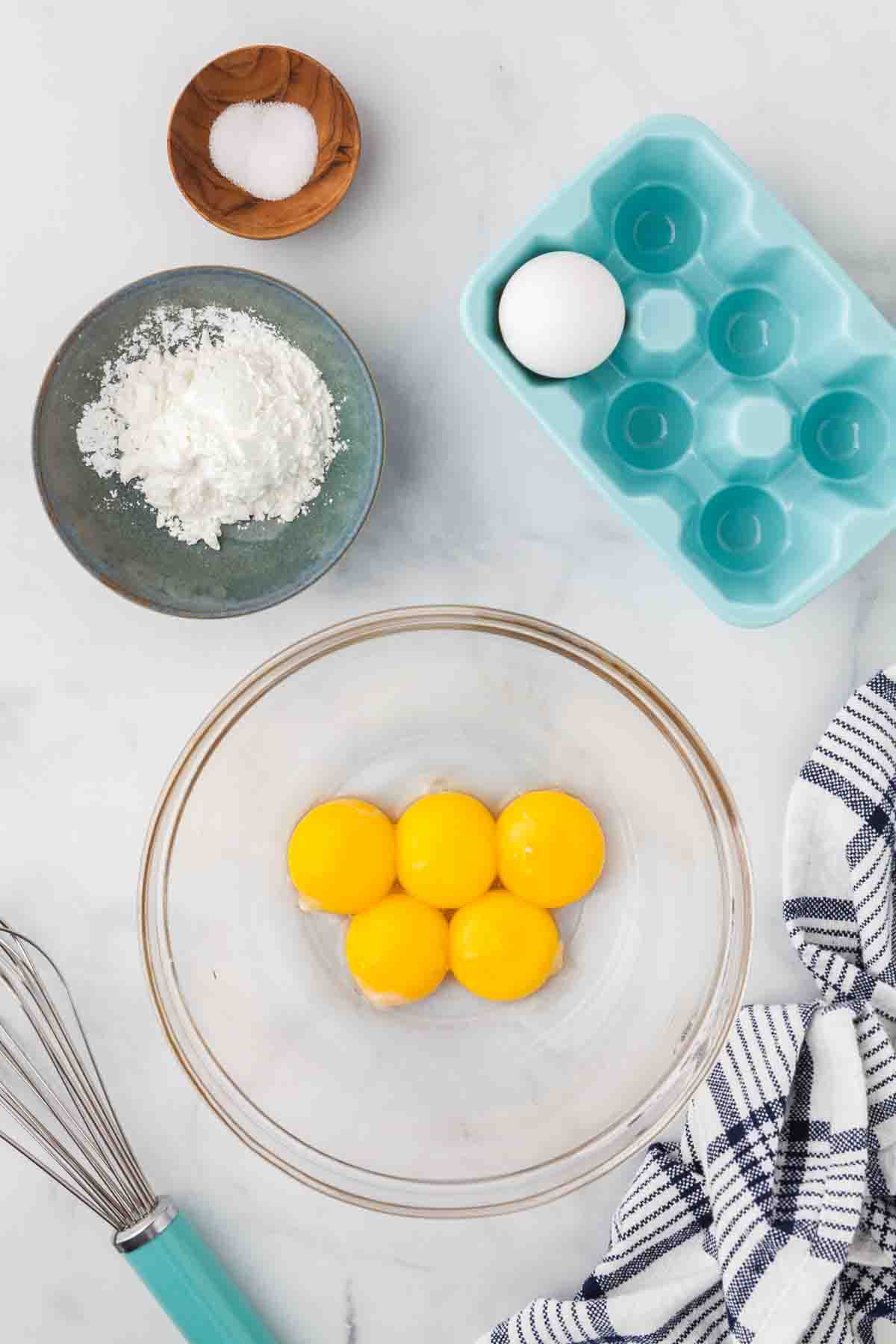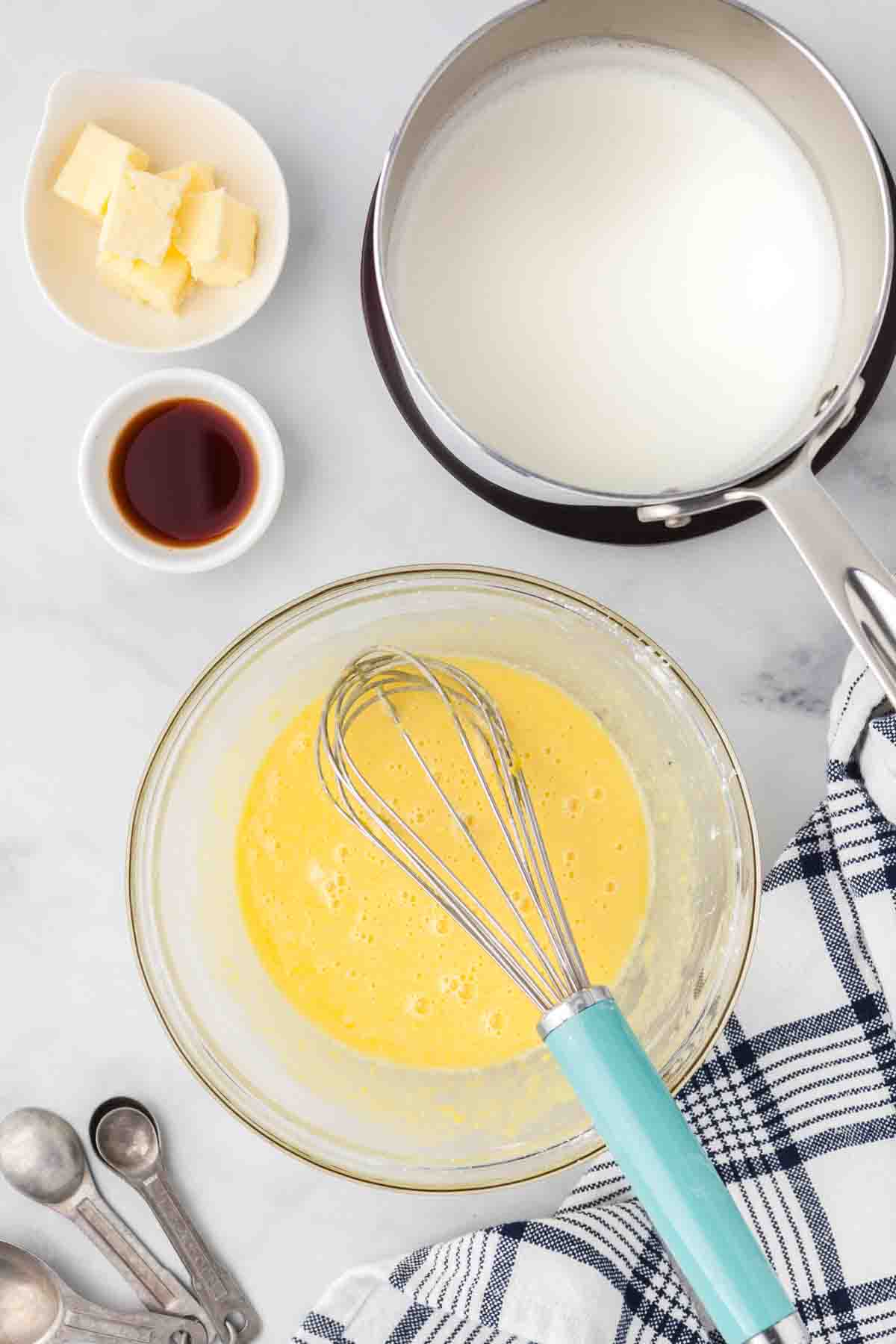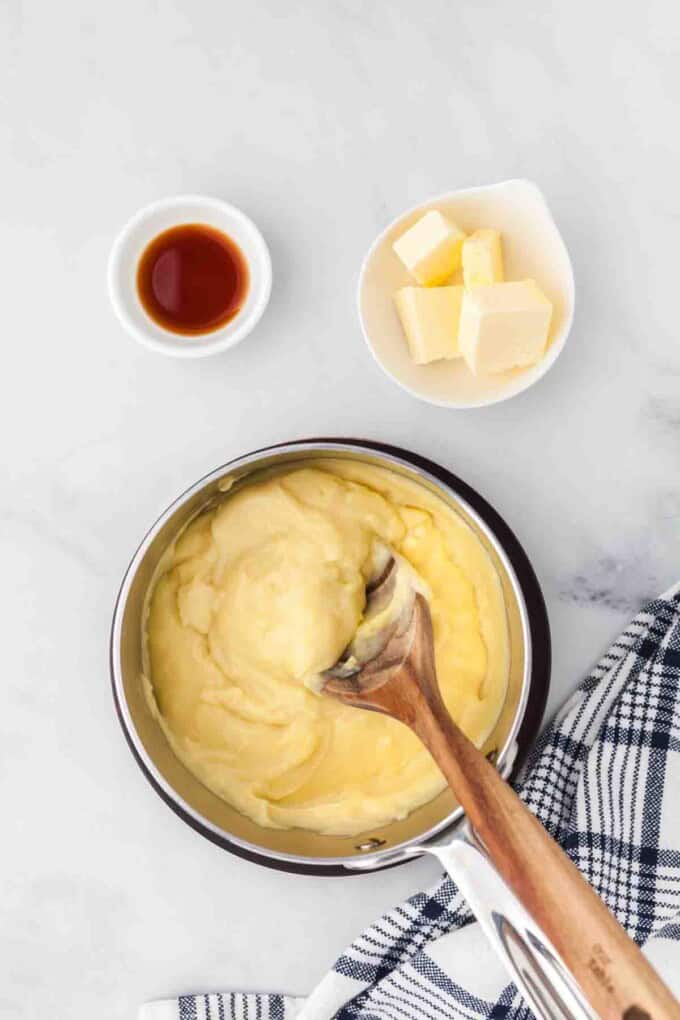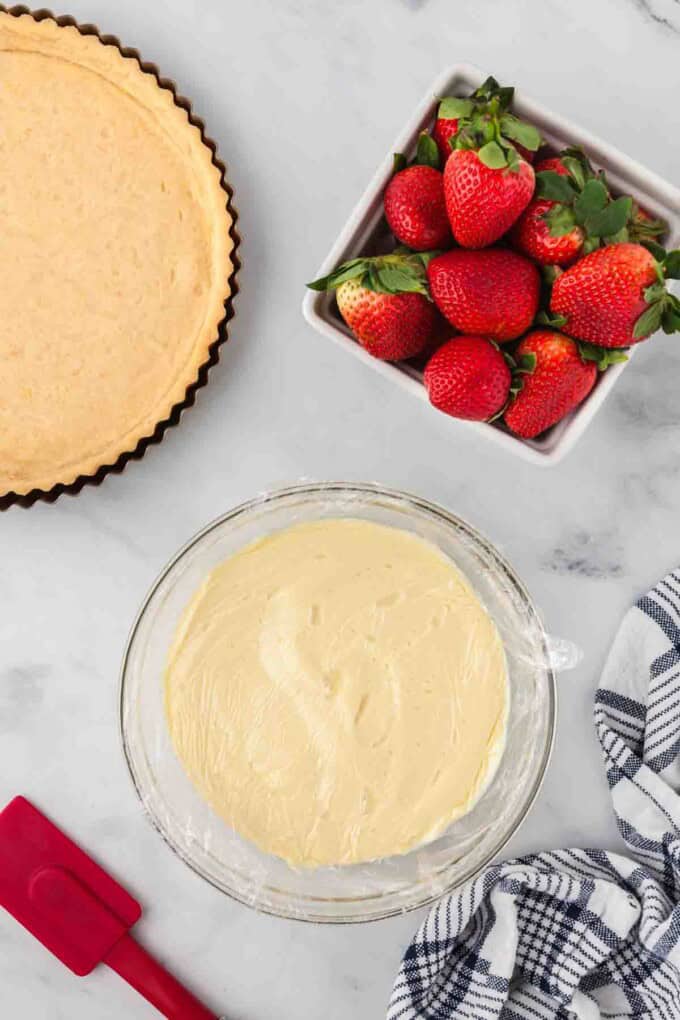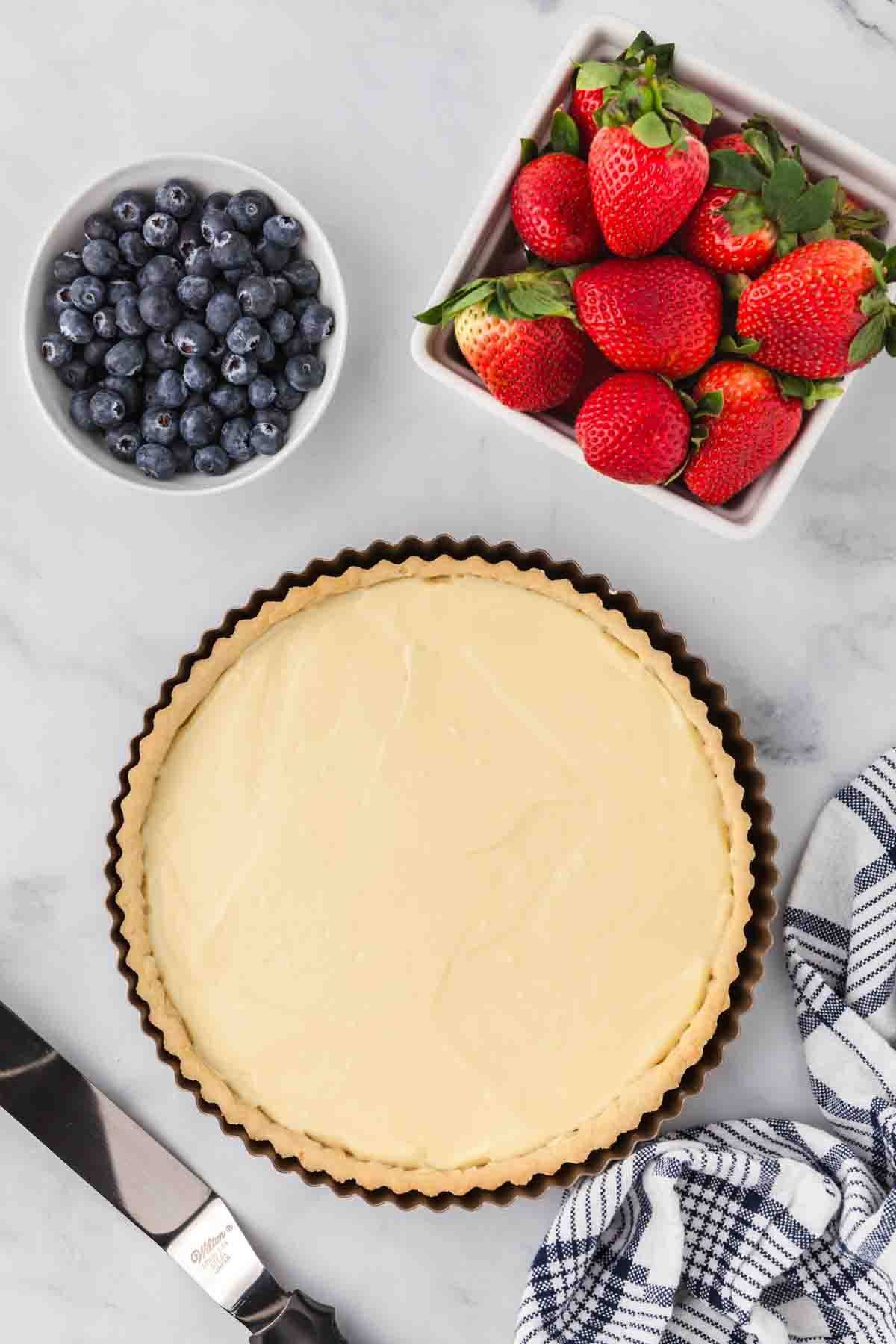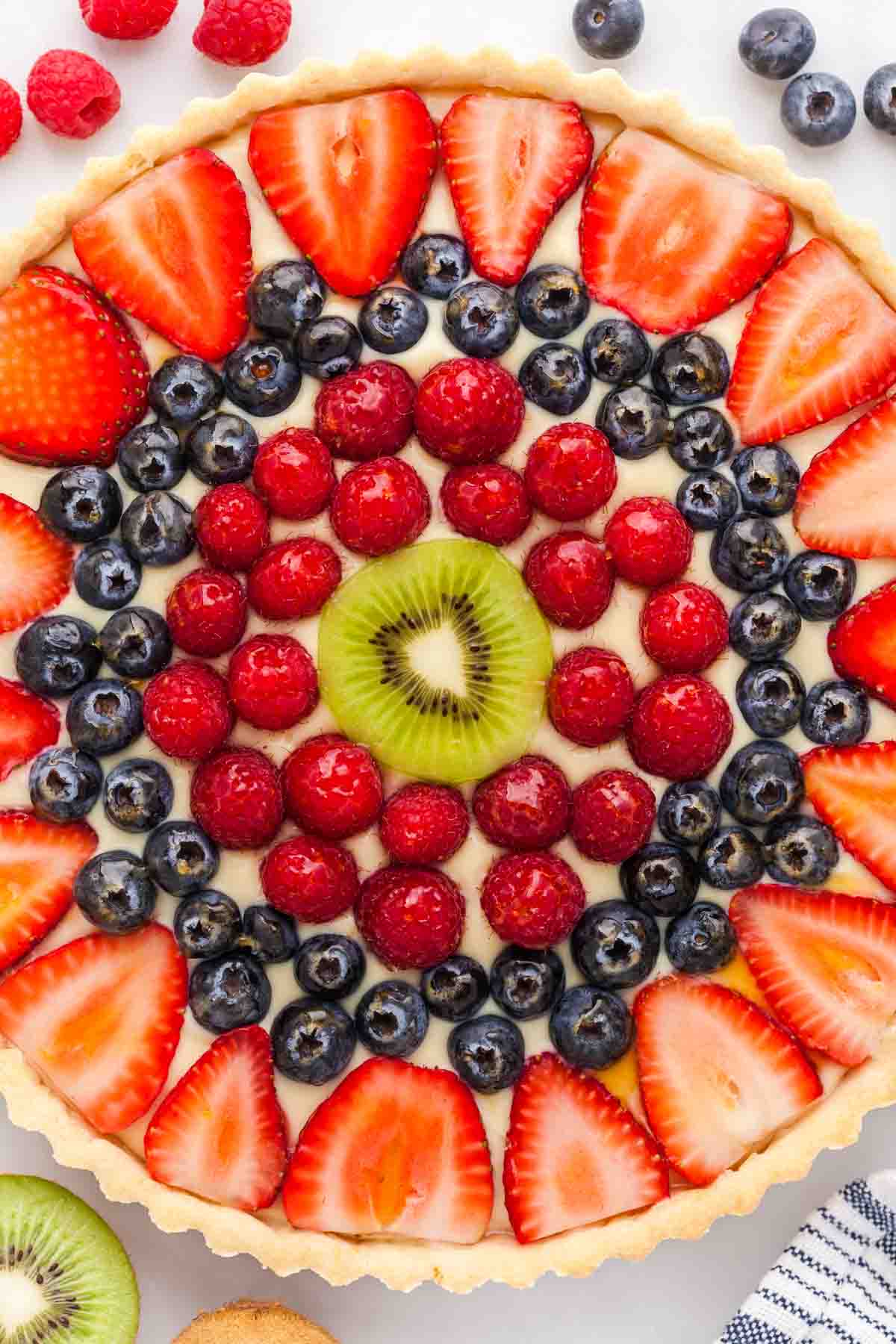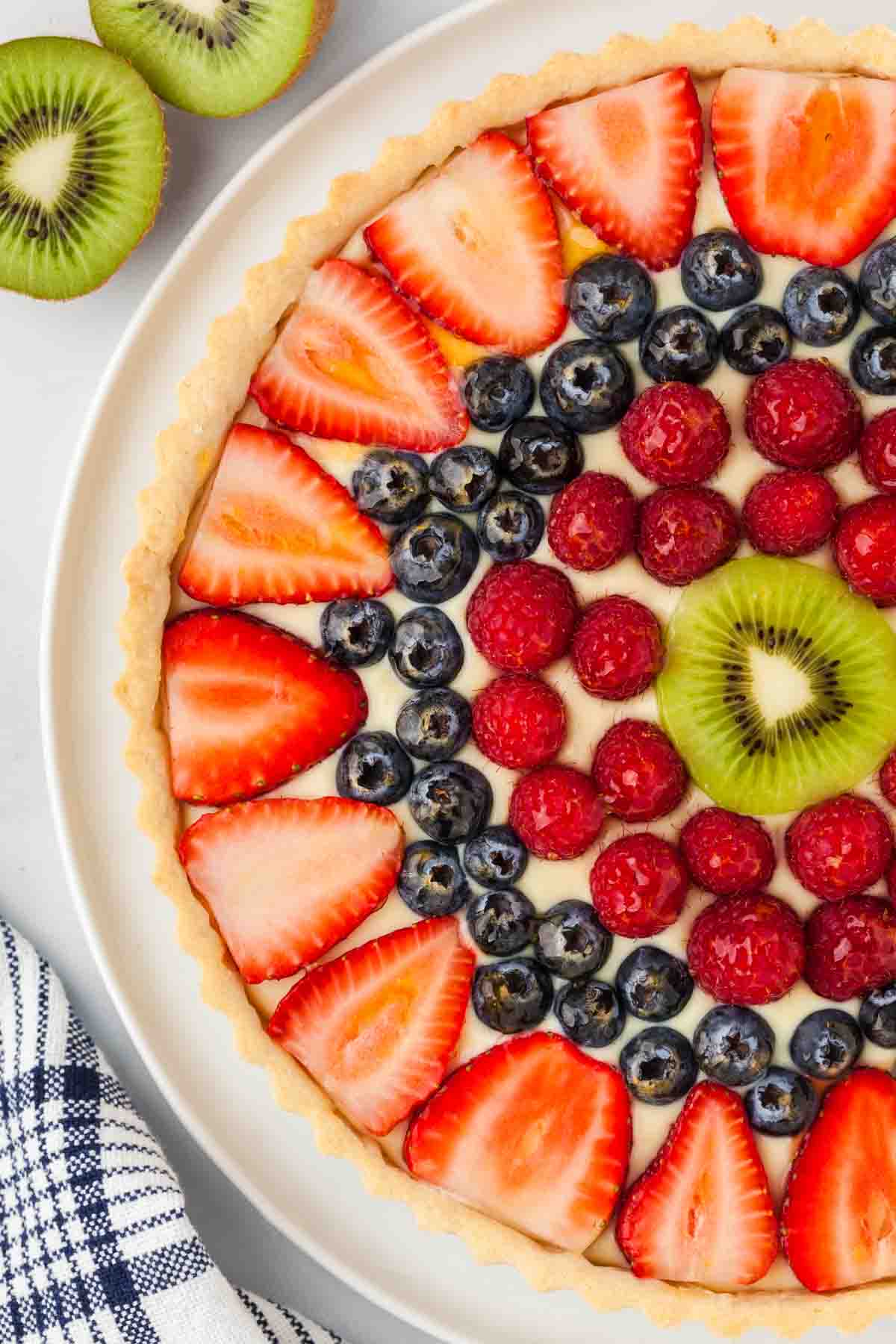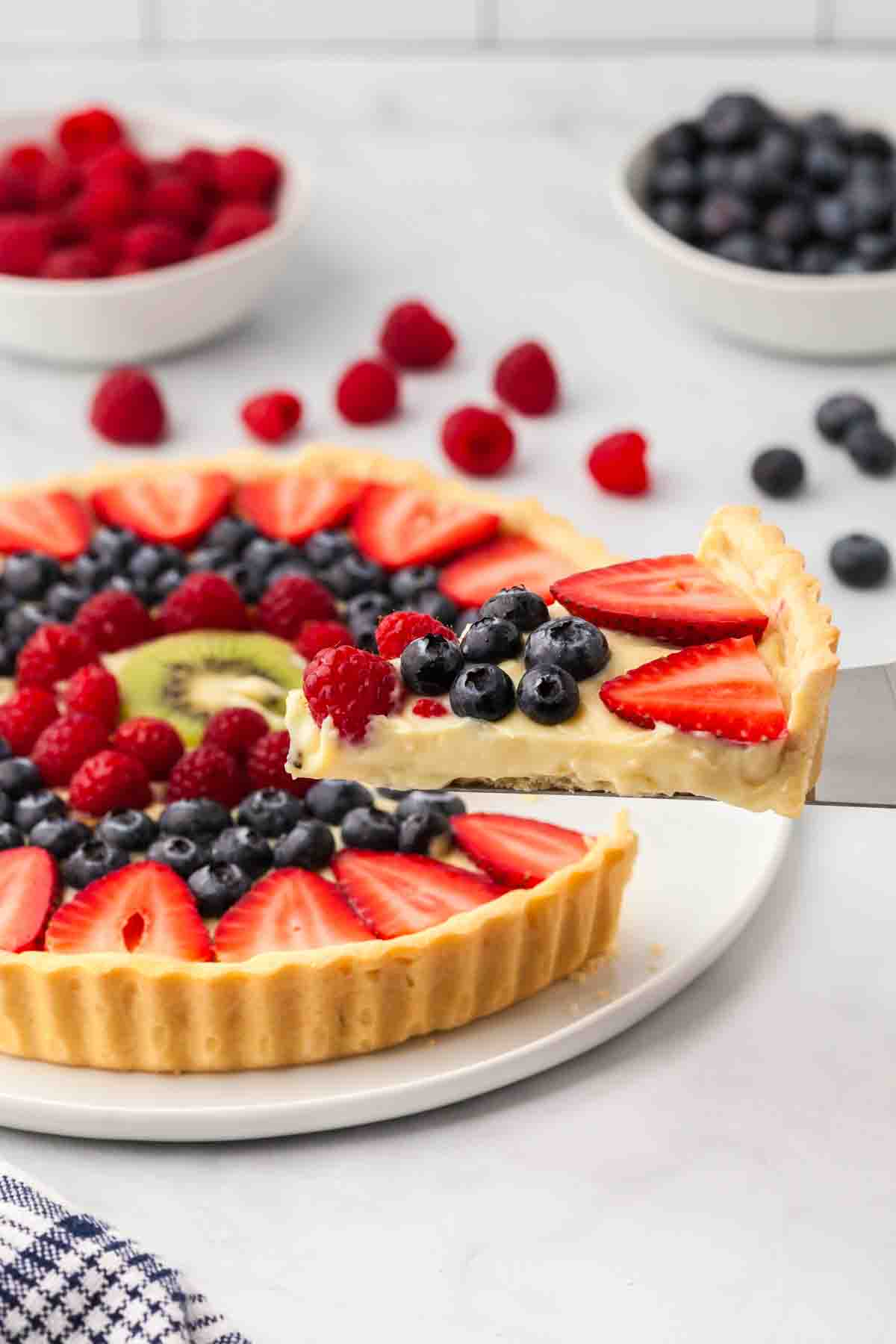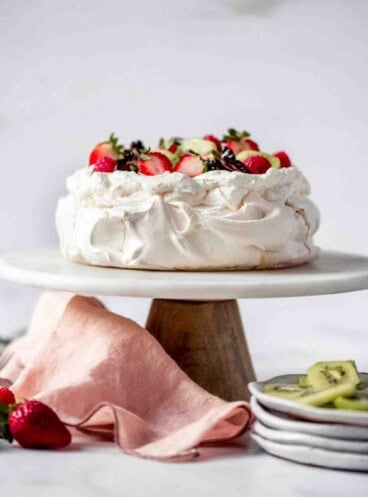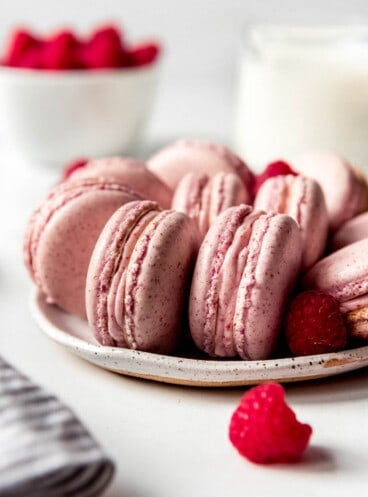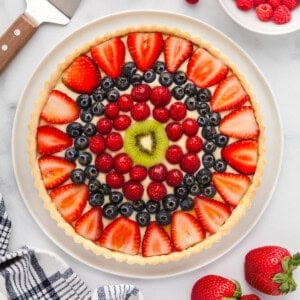If you have ever been to Paris, chances are those stunning jewel-colored fruit tarts and French pastries displayed in the windows of every patisserie (aka French pastry shops) caught your eye. As much as I love chocolate croissants, baguettes, macarons, and crepes, of all the foods I tried in France, it was their fruit tarts that were my favorite over anything else. A classic fruit tart is the thing I’ve missed most back home. French fruit tarts are a wonderful dessert idea for entertaining, especially with during berry season when fresh berries and other fruit are at their best! If you love this French fruit tart recipe as much as we do, be sure try out our Fruit Pizza, Classic Pavlova, Raspberry Chocolate Tart!
How to Make an Authentic French Fruit Tart
A tart is a sweet or savory dish made from pastry dough with a firm, crumbly crust. Tarts are typically baked in a pan with shallow sides and a removable bottom since they only have a bottom crust, and are unmolded before serving. There are 4 components to most classic French fruit tart recipes:
A sweet pastry crust The vanilla pastry cream filling Juicy, fresh fruit A fruit tart glaze
You can use almost any fruit you like to create a French fruit tart! In Paris, you will see strawberry tarts with whole strawberries standing on end, raspberry tarts with piles of delicious red or golden raspberries, or mixed fruit tarts like this one that I made with strawberries, blueberries, sliced kiwi fruit, mandarin oranges, and raspberries arranged in a decorative pattern over the vanilla pastry cream. But blackberries, peaches, cherries, or almost any other fruit you can think of would be delicious with a sweet, shortcrust tart crust and creamy, silky pastry cream. Don’t assemble your French fruit tart too early before serving as the pastry crumb will start to soak into the crust over time. I think it’s best when the tart is eaten within 1 to 2 hours of filling the tart shell. There is a work-around I saw where you can melt a little chocolate and spread that in the bottom of your baked tart shell, then let it set to create a barrier between the crust and the filling to keep it from getting soggy, but your best bet is waiting to assemble just before serving. Since all of the components of the fruit tart can be made in advance, assembly is actually pretty quick and easy. It’s a great make-ahead dessert idea that is especially fun for entertaining because of how impressive and beautiful they look!
What is Pâte Sucrée (also known as a Sweet Pastry Crust or Shortcrust Pastry Dough)?
The tart crust recipe I use for my French fruit tart is called pâte sucrée in France. But don’t let the fancy name throw you! Pâte sucrée is just a sweet pastry crust that is actually easier to make than pie dough. This buttery, sweet tart crust is actually more of a firm, crumbly shell with an almost cookie-like texture, as opposed to pie crust which is known for being flaky and light. My sweet tart dough recipe calls for powdered sugar rather than granulated sugar, which gives it the unique, melt-in-your-mouth yet sturdy texture that really sets it apart and makes it the perfect vessel for holding the delicious vanilla pastry cream and loads of fresh fruit that we are going to fill it with.
How to Make a Tart Crust
Combine the egg yolk, cream, and vanilla together in a small bowl and whisk together with a fork. Using a food processor, cut the butter into the flour, powdered sugar, and salt until it resembles coarse crumbs. This can also be done by hand using a pastry cutter. Slowly pour the liquids into the flour mixture while the food processor is running and let it process until it begins to come together. Remove the tart dough and flatten it into a disc, then wrap in plastic wrap and chill for at least an hour in the fridge. When the dough has chilled, roll it out on a lightly-floured surface into a circle slightly larger than your tart pan. Mine is a 9-inch pan but readers have reported that they have enough tart dough to fit a 10-inch pan. Gently lift the tart shell over your tart pan. I find it easiest to roll the tart dough onto my rolling pin (affiliate link) and using that to help lift it into place to avoid tears. Press the crust into the corners and fluted sides, then run a rolling pin over the top to cut off any excess dough. Freeze the tart shell for 30 minutes, then press a double layer of foil into the tart shell and fill with pie weights. Do not prick the shell with a fork like you might for a pie crust! Here is a helpful resource with step-by-step pictures about how to blind bake a tart crust using pie weights. Bake for 30 minutes at 375 degrees before removing the pie weights and foil and baking for another 5 to 10 minutes, until golden brown, then remove from the oven and cool completely.
What is Pastry Cream?
Pastry cream (also known as crème pâtissière) is a thick, creamy custard with a silky smooth texture that can be used for filling cakes, tarts, cream puffs, eclairs, and other desserts. I use it so often and in so many ways that I actually ended up doing another post entirely dedicated to how to make vanilla pastry cream! It was actually the component of this dessert that I felt most intimidated by having attempted a few different pastry cream varieties in the past that were either too thick, too gummy, or just plain too bland. That’s the tricky part about pastry cream – it needs to be tasty on it’s own, but it also needs to be a team player in this dessert so as not to override the brightness of the fresh fruit or sweet, buttery crust. Pastry cream is made with milk, cream, sugar, salt, cornstarch, egg yolks, butter, and vanilla for flavoring (although you could use different extracts to change it up in other desserts). I actually use Nielsen-Massey’s vanilla bean paste instead of plain vanilla because I love the flecks of vanilla bean in the pastry cream, although the same thing can be achieved by using actually vanilla beans and infusing them with the milk and cream at the start of the cooking process, then scraping out the seeds. But you can just use regular vanilla extract if that’s what you have on hand.
How to Make Pastry Cream
Bring the milk and cream to a simmer in a medium saucepan with half of the sugar. It doesn’t need to boil and it doesn’t take long. Medium-high heat will do the trick in less than 5 minutes. While the milk mixture heats, whisk together the sugar and cornstarch in a bowl so that it is evenly combined. Then whisk in the egg yolks until the mixture is light and creamy. When the milk is hot, temper the egg yolks by slowly pouring half of the hot liquid in to the yolks, whisking constantly. This will keep the egg yolks from scrambling when added to the pan. Pour the tempered egg yolk mixture into the pan with the remaining liquid, reduce the heat, and continue to whisk constantly until the pastry cream is thick and a few bubbles start to pop on the surface, then remove from the heat. Stir in some cold butter and vanilla bean paste (or an equal amount of vanilla extract). And that’s it! Transfer to a shallow pan or a bowl and lay plastic wrap directly on top of the pastry cream so a skin doesn’t form while it cools. Then cool completely in a fridge for 3 hours before using.
Fruit Tart Glaze
This step is so easy, but a fruit tart glaze was missing from many of the fruit tart recipes I looked at when researching how to make this lovely French dessert. I knew from my time in Paris that the tarts there absolutely glisten in the patisserie shop windows, so I had be sure my recreation of a French fruit tart had the same jewel-like quality. And really, all that is used to glaze a fruit tart is a warmed up, light colored jelly or apricot jam that gets gently brushed on to make the fruit shine. Although I also like the extra little bit of flavor it adds as well. Apple jelly or apricot preserves are my favorite options for a fruit tart glaze, although I’ve seen other sources call for red currant jelly. You won’t use the full amount called for in the recipe, but I find it’s easiest to heat up half a cup of the preserves or jelly just until warm and stirring until it is smooth. Then just dip a pastry brush into the apricot glaze and dab it on the fruit decorating your tart.
Assembly
When you are ready to assemble your tart, wash and dry your fruit, cutting any large fruit into bite-size pieces. Spread the cooled pastry cream into the bottom of your tart shell, then top with fruit in a pleasing design arranging kiwi slices so they are overlapping or filling in gaps with smaller fruits like blueberries or blackberries that have been cut in half. Brush with the glaze and serve!
How to Store a Fruit Tart
A fruit tart is best enjoyed the day it is assembled although it’s still good the next day as well, even if the crust has softened slightly. To store leftovers, cover with plastic wrap or store in an airtight container in the fridge overnight. It can be eaten for up to 3-4 days but is best when it’s freshest.
Can this recipe be frozen?
You can bake and freeze the tart shell for up to 1 month. Wrap it carefully in plastic wrap and store in a freezer-safe bag until ready to use. I don’t recommend freezing the pastry cream or freezing the assembled tart because they don’t thaw well.
More Tart Recipes
Spring Vegetable Ricotta Tarts Raspberry Chocolate Tart Mixed Berry Tart with Lemon Pastry Cream Asparagus Tart
This post was originally published in April, 2018. The photos and content were updated in August, 2022.
French Macarons Recipe (Easy!)
Pavlova
Raspberry Macarons
Let me know what you thought with a comment and rating below. You can also take a picture and tag me on Instagram @houseofnasheats or share it on the Pinterest pin so I can see.
